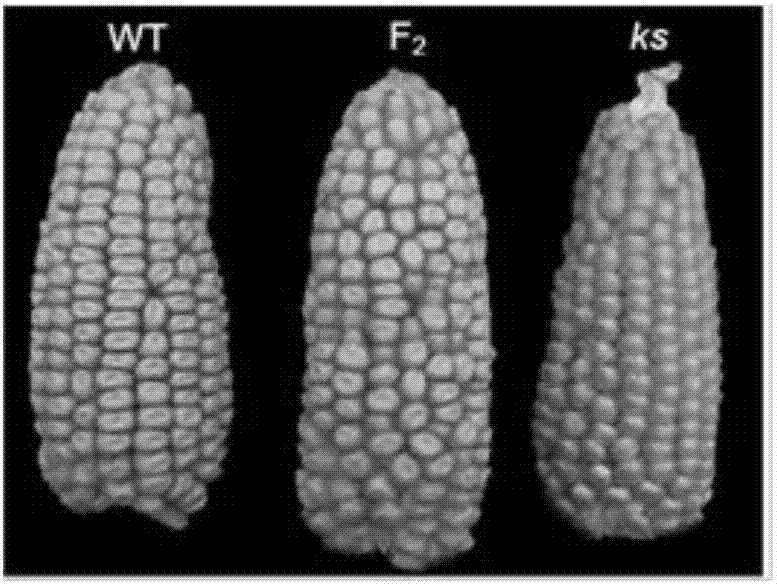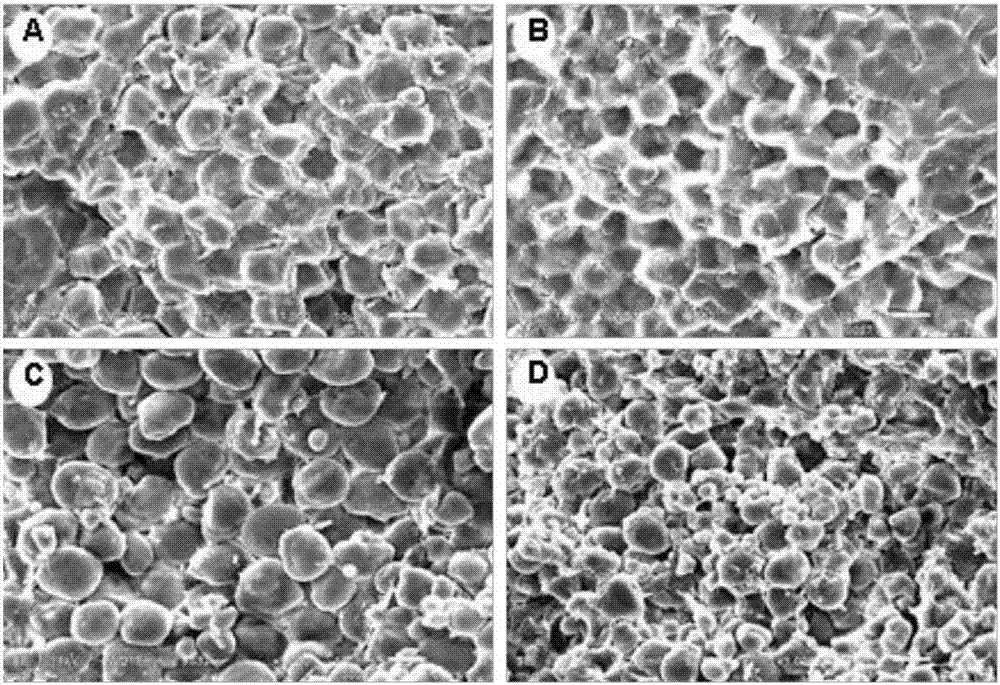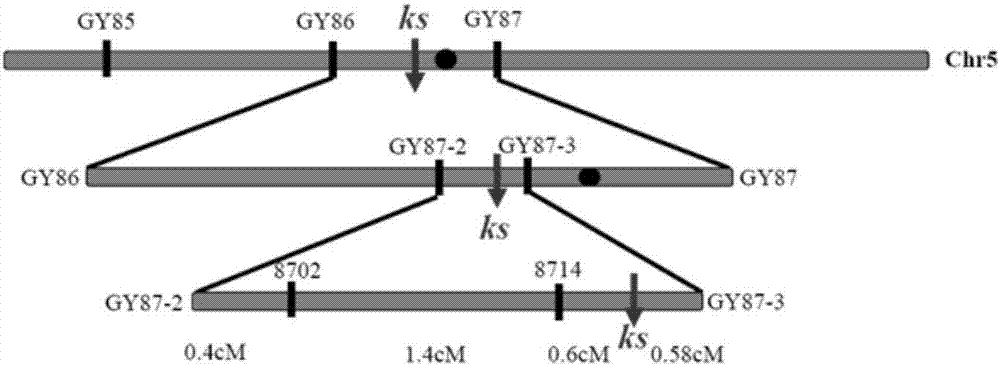Maize kernel size mutant ks and its application
A mutant and grain technology, applied in the field of plant genetic engineering and molecular biology, can solve the problems of grain shrinkage, small grain size, and hollow peel.
- Summary
- Abstract
- Description
- Claims
- Application Information
AI Technical Summary
Problems solved by technology
Method used
Image
Examples
Embodiment 1
[0038] The acquisition of embodiment 1 mutant material
[0039] In 2000, a natural mutant with small kernels was found in the process of conventional breeding in the field, and it was named ks (kernelsmall). After selfing the mutant, it was found that F 1 F 1 F 2 In the second generation, two phenotypes appeared in the grain, one was consistent with that of the normal parent, and the other was significantly smaller than the normal parent, and the segregation ratio was 3:1. Regardless of the reciprocal cross, the results were consistent, and the traits were stable in different locations and years. Under different genetic backgrounds, ks showed smaller grain size, so the mutation of KS gene directly led to smaller grain size. The traits of the mutant have been stably inherited through multiple generations of self-crossing. When observing and comparing the plant morphology of the mutant and the wild type throughout the growth cycle under field conditions, it was found that the...
Embodiment 2
[0040] Embodiment 2 grain phenotype identification
[0041] 1. Grain shape comparison
[0042] Select representative wild-type fruit ears and the mutant ks fruit ears of the present invention, and its appearance contrast sees attached figure 1 shown. Among them, WT on the left is the wild-type ear, and F in the middle 1 The surrogate ear, the ks on the right is the ear of the mutant ks.
[0043] 2. Scanning electron microscope observation of internal structure
[0044] Select representative wild-type grains and mutant ks grains of the present invention. After the grains are dried, tap lightly in the middle of the grains to make them longitudinally fracture in a natural state, remove both ends, and make a cross-section of about 2mm , stick it on the sample stage with double-sided tape, spray gold coating on the ion sputtering instrument, use JSM-6610LV scanning electron microscope, observe the fault structure of the grain under the acceleration voltage of 15kV, and choose t...
Embodiment 3
[0068] Example 3 Obtaining of the ks mutant gene of corn grain volume mutant
[0069] 1. Construction of isolated groups
[0070] Simultaneously with the genetic analysis of the grain size mutation gene, the construction of segregating populations has been carried out, and the F 2 group. For each group, 60 normal grains and 60 small grains were selected respectively, and seedlings germinated. One young leaf was taken from each seedling for DNA preparation. At the same time, the parental leaves were taken to prepare the parental DNA.
[0071] 2. Extraction and purification of total DNA from maize genome and creation of DNA pool
[0072] The DNA was extracted according to the method of McCouch et al. (1998) and improved, and the RNA was removed and quantified with a standard amount of λDNA. In the segregation population, the DNA of 30 normal grains and small grains were mixed in equal amounts to form the gene pool (BulkN, BulkS) for DNA analysis.
[0073] 3. SSR marker ana...
PUM
 Login to View More
Login to View More Abstract
Description
Claims
Application Information
 Login to View More
Login to View More - R&D
- Intellectual Property
- Life Sciences
- Materials
- Tech Scout
- Unparalleled Data Quality
- Higher Quality Content
- 60% Fewer Hallucinations
Browse by: Latest US Patents, China's latest patents, Technical Efficacy Thesaurus, Application Domain, Technology Topic, Popular Technical Reports.
© 2025 PatSnap. All rights reserved.Legal|Privacy policy|Modern Slavery Act Transparency Statement|Sitemap|About US| Contact US: help@patsnap.com



